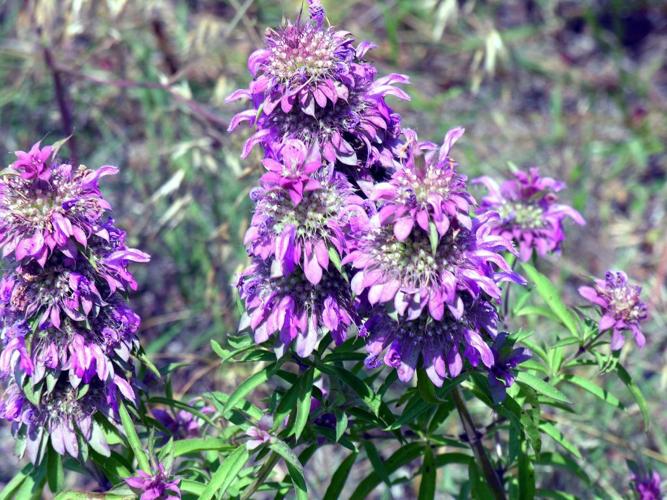Question: Why are bees in my vegetable garden? They appear to be digging in the soil. Makes it impossible to get veggies.
Answer: Many species of solitary bees make their homes in the soil. A group called digger bees or Anthophora (meaning “flower bearer”) are extremely common and they sometimes nest in large numbers like a community of single-family homes. Your garden is likely a good spot, according to the bees. They are not typically aggressive should you want to work around them. If you want to discourage them from nesting there, one thing you can try is using an overhead sprinkler in the area where they are nesting. Digger bees will often seek a new habitat if there is regular water raining down on their holes. Since these are also some of our native pollinators, it is good to keep them alive and nearby, if not in your garden.
Question: How likely are seriously neglected mature citrus trees to recover?
Our trees are located in central Tucson and have curling leaves, and we will not be able to water them until after May 20. They probably have not been watered (other than rain of course) since last summer.
Answer: It’s hard to say for sure without seeing them. Curling leaves is a symptom of drought so watering soon would be good. That said, at least the leaves are still on the tree and that should give you hope. The next thing the trees will do without water is drop the leaves to reduce the amount of water escaping into the atmosphere through the leaves. Make sure that when you have the opportunity to water that you put the trees on drip irrigation arranged in a circular fashion around the drip line of the trees. The timing should be set for once every seven to 10 days now that we are experiencing the hottest and driest part of the year. Also make sure the water gets to a depth of 36 inches in the soil. You can measure this with a simple soil probe.
Question: I have a customer who is trying to identify a plant. She says it can change directions of the branching/leaves almost at will. It has leaves like a wild chive or a hesperaloe combination.
Answer: It is from the genus Kniphofia, and commonly called tritoma, red-hot poker, torch lily, knofflers, or poker plant. They are closely related to aloes, although Kniphofias don’t have very succulent leaves. There are quite a few species and cultivars of different colors. It is native to Africa. The plant has a mature height of 2 to 4 feet and a width of 3 feet. It does well in a site with full sun and well-drained soil.
Question: My orange tree has been very productive for 14 years but it put out small fruit last year and this year it is blooming more than a month later than usual. Is something wrong with my tree?
Answer: Both symptoms you described, small fruit and odd bloom time, are associated with lack of water. It is possible that your irrigation system needs adjusting, so that would be the first thing to check. Also we had a relatively dry late winter and early spring this year. If you reduced your irrigation for the winter as recommended and then experienced no rain in February and March, your tree was probably in need of more water. Citrus trees sometimes respond to drought conditions followed by rain with a bloom about a month later, which corresponds to the rain you had in early April.
Question: I have a question related to the “Desert Museum” palo verde.
I want to plant this tree at our house, but I am a little wary because of the threat of palo verde beetles getting to the roots and killing it prematurely. Perhaps you can help me assess this risk?
Answer: The main risk for these beetles is an unhealthy tree. The palo verde beetle is endemic to this area and there is little to be done to a tree that has been infested. They are known to attack stressed trees so the best prevention is to keep trees as healthy as possible. This is primarily accomplished by providing proper irrigation and pruning. Since these are native desert trees they can survive on rainwater but when we have drier conditions than usual, supplemental water can help. Typically for desert trees this means installing drip irrigation around the tree at the drip line and providing deep watering to a depth of 24 to 36 inches every 14 to 21 days in the spring, summer, and fall. In the winter you can skip the irrigation, assuming we have normal winter rains. Proper pruning when the tree is young will result in a mature tree that is structurally stronger, lives longer, and is less costly to maintain. Don’t be in a hurry to prune at planting. A newly planted young tree should be given a chance to put down roots before taking any branches off unless they were damaged in the planting process. After a year or so it will be time to structurally prune your tree to ensure its long-term health.






